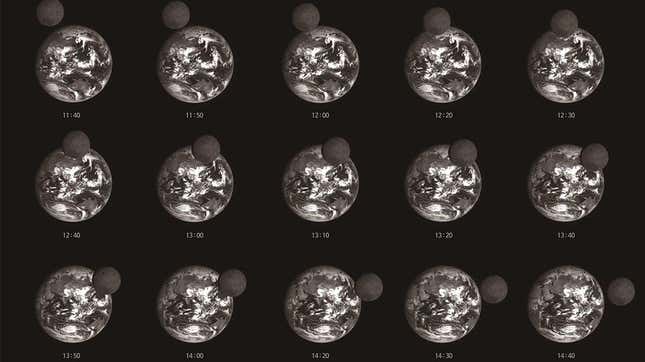
After a four month journey through space, the Korean Pathfinder Lunar Orbiter (KPLO) has finally reached lunar orbit. The probe will spend the next year scanning the surface from above in search of water ice and suitable landing spots for future missions.
South Korea’s first mission to the Moon, known as Danuri, completed its first lunar orbit insertion maneuver on December 17 at 12:45 p.m. ET (2:45 a.m. in South Korea), the Korea Aerospace Research Institute (KARI) announced on Monday. “The first entry maneuver was the most important maneuver to ensure that Danuri was stably captured by the moon’s gravity and did not pass the moon,” KARI’s statement read.
The first orbital maneuver reduced the spacecraft’s speed from around 4,970 to 4,660 miles per hour (8,000 to 7,500 kilometers per hour), and it was confirmed that Danuri entered lunar orbit on Monday.
Danuri has four more planned orbital maneuvers, with the last one taking place on December 28 and placing the orbiter within about 60 miles (100 kilometers) of the Moon’s surface, according to KARI. If successful, Danuri will be placed in an elliptical orbit around the Moon and begin its science mission in January 2023.
The lunar orbiter launched on August 5 on board SpaceX’s Falcon 9 rocket, marking South Korea’s first deep-space mission. Danuri is equipped with four science instruments built locally, as well as a NASA camera to capture views of the lunar surface. From its low orbit, Danuri will explore the Moon’s shadowed regions, which scientists believe could host water ice.
The 1,100-pound (500-kilogram) probe will ideally set the stage for South Korea’s ongoing exploration of the Moon, pointing out potential landing spots on the lunar surface for future missions. For the second phase of the mission, South Korea hopes to launch a lander and a rover, in addition to another orbiter, according to The Planetary Society.
NASA, with its Artemis program, isn’t the only space agency with its sights set on the Moon. National space agencies in South Korea, Japan, China, and the United Arab Emirates are all keen to visit and explore the lunar environment, which is set to become a potential gateway to further destinations in space.
More: Japan’s Private Moon Mission Captures Stunning Farewell Photo of Earth